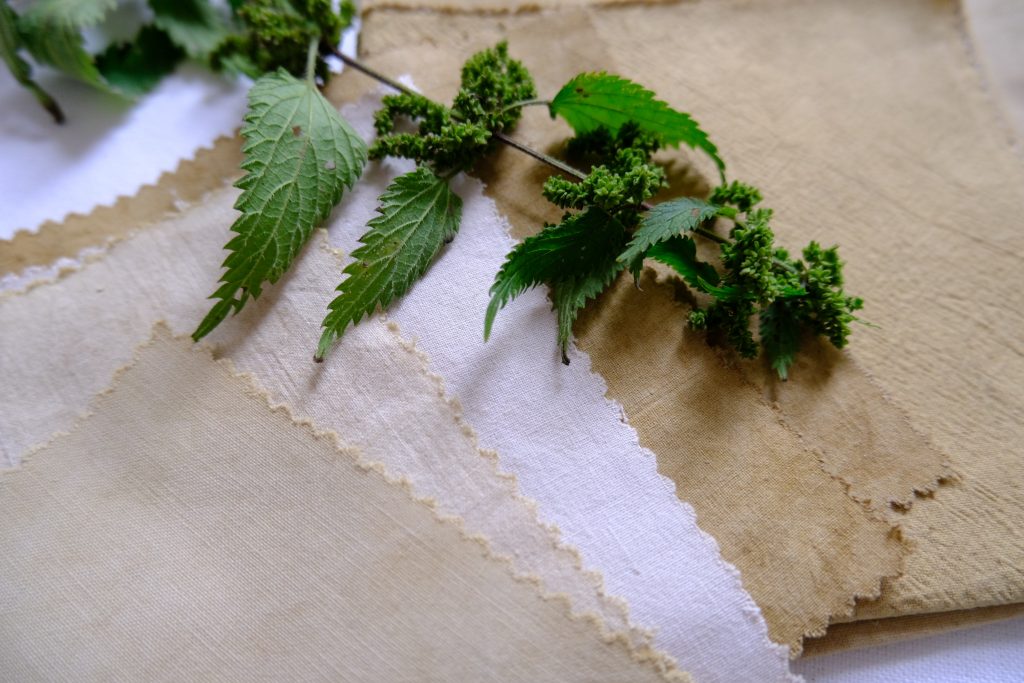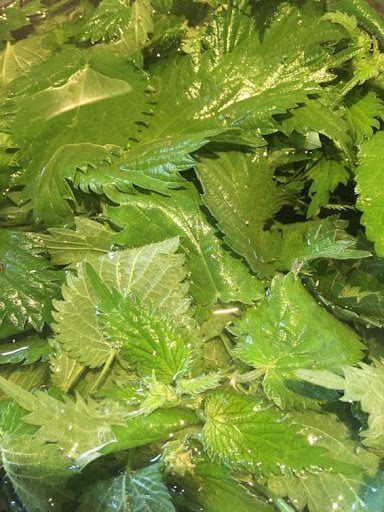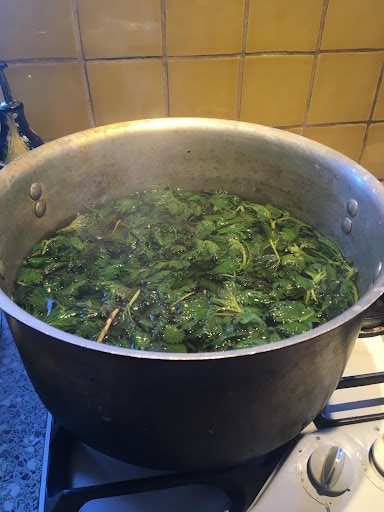If you are not familiar with the basics of natural dyes, we recommend you to read our Natural Dyeing Notes here
Nettle fibre can be used to make fabric or yarn. It is similar to linen and its use extends back to the Middle Ages. It is also medicinal, nutritious and gives a natural dye of yellow to yellow/green.


Nettles grow abundantly from Spring through Summer and can be found on hedgerows, roadsides and gardens.
The leaves can be picked once the plants have begun to establish themselves in Spring. Use a basket or bowl to drop them into. Take care when gathering as they do sting! You can use gloves if you wish and use a scissors or secateurs to snip the top leaves off the plant (lower ones can be used too in more mature plants). Watch out for any leaves that are curled as they may have caterpillars inside and obviously, do not pick them. Pop the leaves into a bowl or basket as you gather them.
Leave them to stand outside for an hour or so to allow any insects to crawl away.

Step One
Use at least the same amount of nettles as the weight of your fabric/yarn to be dyed. Place in a large pan and cover with water, just enough to cover the leaves. Heat slowly to simmering point i.e when you begin to see bubbles coming to the surface. Do not allow the water to boil. You don’t want to cook the nettles as this can affect the optimal extraction of dye from the plant. Turn the heat off once simmering point is reached and allow it to cool. You can leave it overnight or up to 3 days. Any longer and it will begin to smell bad!
You can test the colour periodically by dropping a small piece of fabric (prepared with mordant and wet) into the dye. It is ready to use once you are happy with the colour. The colour can vary quite a bit and I have found that using the dye bath after a day produced a more pronounced colour than leaving it for longer. This is why using the pieces of fabric to test is a good idea. The water tends to change from a yellow to a dark green/grey colour over time.

Step Two
Once you are happy with the colour, strain the contents of the pan through a sieve into a bucket and then strain again through some muslin cloth, back into the dye pan. This ensures that all small particles are removed from the dye bath as these can create darker spots on your fabric if left in the water.
Step Three
Add enough water to cover the fabric to be dyed and to allow plenty of space for it to be moved about and take the dye evenly. Wet your prepared fabric, and place in the pan. Heat gently and keep it moving about with a spoon. Simmer for about 30 minutes and keep the fabric submerged. Take particular care if dyeing wool as you will need to heat slowly.


Turn the heat off and leave the fabric to soak in the dye bath overnight and then squeeze it out and allow it to dry naturally. You can rinse the fabric at this point but I would allow it to dry and leave for up to a week before rinsing in water to allow the dye to cure.
Notes prepared by Enda O’Regan for Sewing Café Lancaster/// sewingcafelancaster@gmail.com